
7 minute read
Nasser Butt
from Lift Hands Magazine Volume 15 September 2020 - The Multi-Award Winning Magazine of the Year 2019
by Nasser Butt
Introduction
A
gain, in the realm of the warring arts, the spear - like the sword - should require no introduction!
Returning to E.T.C Werner in his historical work - Chinese Weapons - published originally in 1932 in Peiping [Beijing]:
Originating in the pointed stick, sometimes hardened by being thrust into fire, the spear, artificially pointed, is either used (in the lighter kinds) for throwing, or (in the heavier kinds) for thrusting. Those of intermediate weight are used for either purpose. But a spear thrown at an enemy may be thrown back; consequently it comes in time to be made either so that the head comes off and remains in the wound, or it is made with a hook or a barb, thus practically securing the same result.
In some cases a cord 1 is attached to the shaft, thus enabling the latter to be recovered when the head remains in the wound. The distance in which these weapons are hurled is increased by the use of a sling, made of cord, a knotched-stick, or a more elaborate contrivance…
The single pointed spear was called ko ⼽ (cf. supra). The ko ⼽ is explained as a flat-headed chi 戟 (p’ingt’ou chi 平頭戟), which was a weapon for thrusting and hooking…
1. We will see the re-emergence of this idea with the Dart in the second half of the Hand Weapons.
The Spear
The spear is usually the second of the hand weapons of the Wudang. However, I am placing it here as the third. In functionality, it is deemed our ‘long range’ weapon, where we use our fingers and nails to cut, stab and thrust - especially around the eyes, neck and throat!
Just like the Hammer and the Sword, the Spear teaches the practitioner the basis of the four primary energies - P’eng, Lu, Ji and specifically Arn - and develops the concept within single striking hands! It teaches us how to use our forearms [representing the shaft], and the palm, the tips of our fingers, and nails [representing the head of the spear].
Just like Werner’s description above, the weapon represents both, the different weights as well as the varying lengths of the spear. It is imperative that the readers understand that although we are dealing with the nature of the individual weapon here - in Da Shou all the weapons come together into a singular idea!
All the principles discussed in the previous issues apply here too. If you are unsure or have not read the previous issues of Lift Hands [Volume 13/14], I suggest the reader to go back and consult those issues for clarification before attempting the current method.
I will simply go straight into the solo method followed by the two-person method. Readers are advised that the images are for illustrative purposes only and one should seek a competent teacher from whom to learn.


The Solo Method
Figure 1

Figure 2
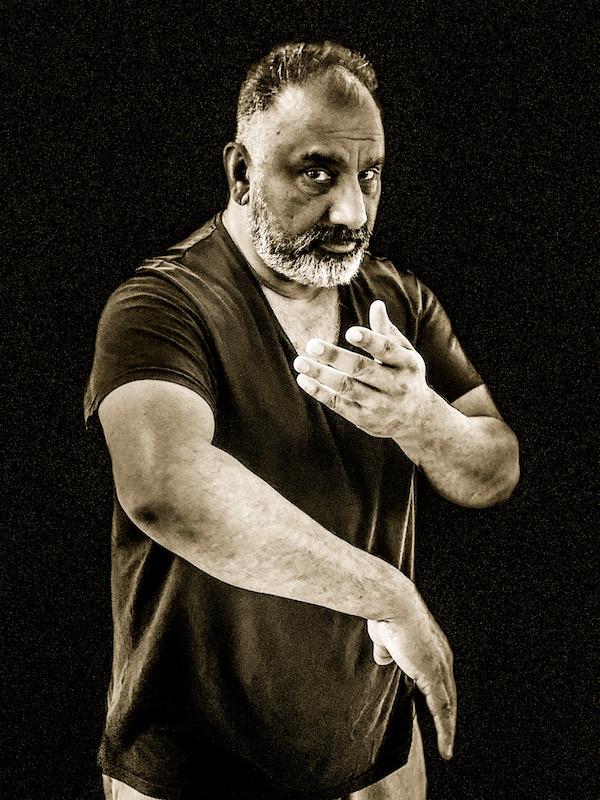
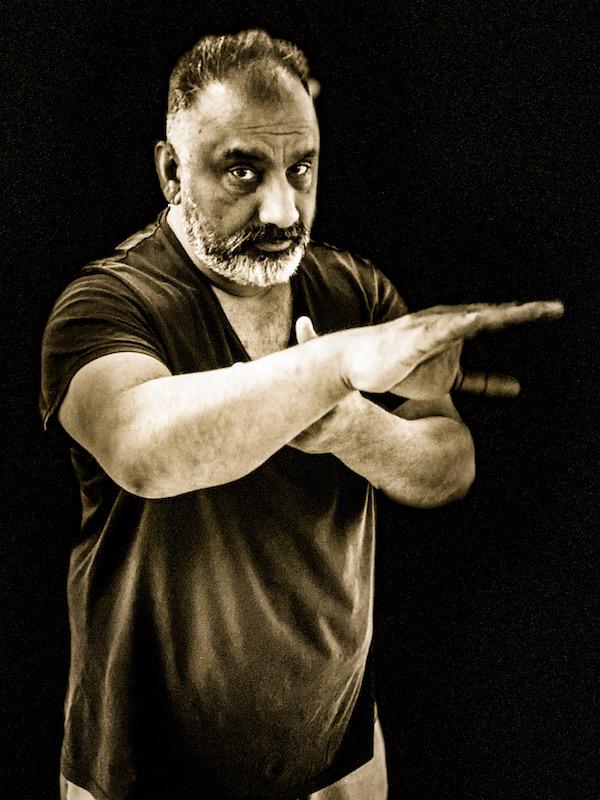
Figure 3
Stand in a reverse Gōng Bù stance with your right leg forward and your left leg back. This isolates your hips, so that your primary movement comes from your waist. Your weight distributions are 70:30 percent in favour of the left leg. The hands hold the classic ‘old man’ posture - left hand p’eng and right hand hinge [Figure 1]. The right hand is held slightly yang.
As you start to bring your weight forwards onto the front foot, your waist turns to your left, causing your right hinge to bump across your centre as it changes state from yang to yin [Figure 2]. Your waist now turns back to the right, causing your right arm to rise in an arc, level with your eyes [Figures 3 & 4].
Figure 4
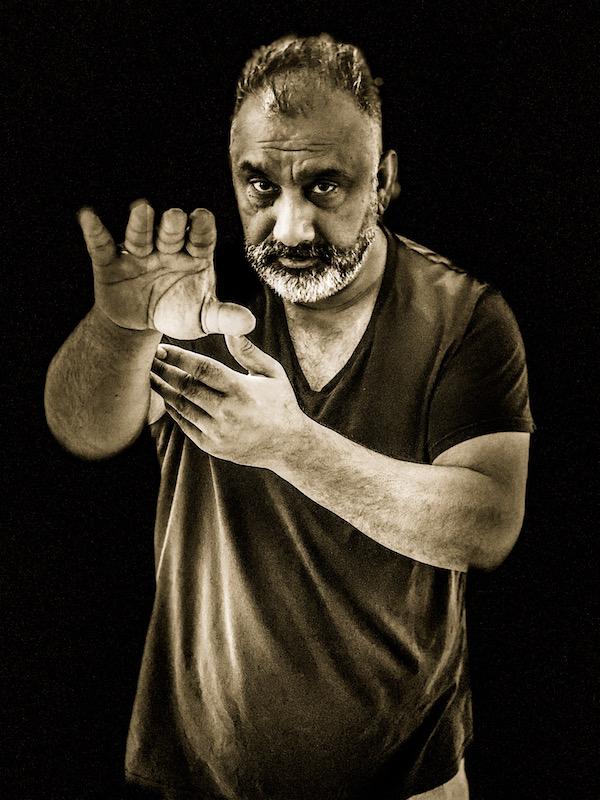

Figure 5

Figure 6
As your weight arrives forward, your waist snaps back to the left, causing your right hand to roll and cut across back towards the left [Figures 5 & 6]. This again conceals the skill of rolling and sealing!
Figure 7


Figure 8

Figure 9
The waist continues its movement to the right as the weight [through the action of the waist] shifts slightly backwards pulling the right hand with it [Figure 7]. Immediately, the left leg issues the extra weight from the previous movement forwards causing the fingers of the right hand to thrust [Figure 8].
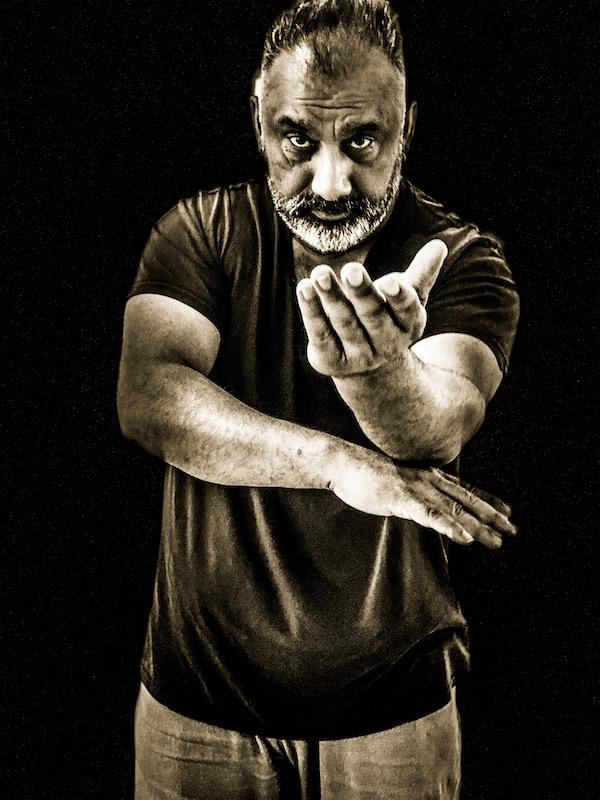
Finally, to finish, the waist continues its leftward motion as you simply fold your right arm across your centre [Figure 9]. The waist turns back to right, the right hand is yin, as if hooking something across the body. The weight moves back towards the left foot as the fingers of the left hand thrust forwards at throat height [Figure 10].
The practitioners must note how the hands remain upon the centre throughout the method. It is the centre [waist] which is causing the hands to move and change shape. In order to achieve this your arms must be in a total state of soong!
Figure 10 The drill must be practiced until you can execute it in its entirety at a fa-jing level on the beat of one! As already mentioned previously, it must be practiced four ways.
Do remember that students were given one weapon per year to develop and master before they could go on to the next one. This means that there is more to this drill than meets the eye!
In the two-person drill overleaf, both practitioners must agree upon the purpose and the pace of their training, otherwise they will fail to learn the lessons which the drill will impart.
All transitions must be fluid. The whole body must move as a single unit - connecting from the feet through the waist to the hands and rooted. The energy sunk into the Tan-tien!
The Two-Person Method
A
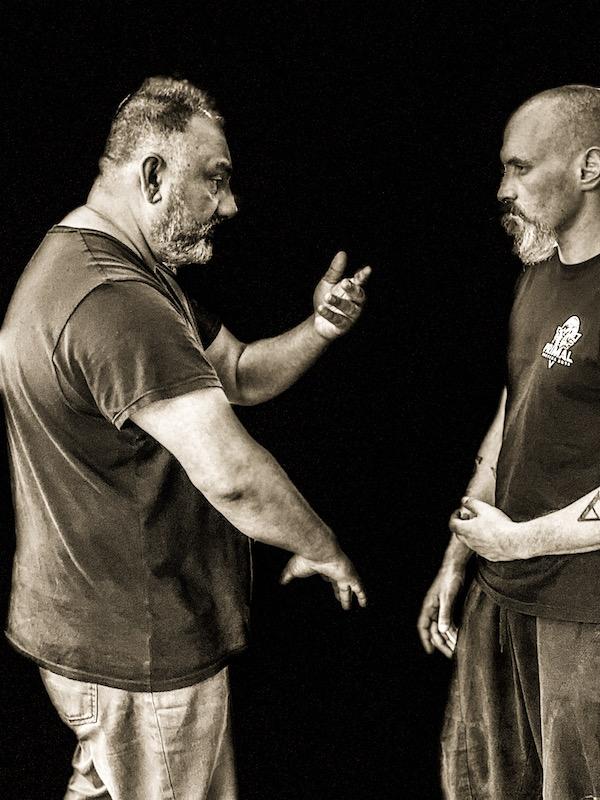
B
To start the method B throws a straight punch with his left hand at A down the centre. A bumps B’s forearm with his right hinge as he shifts his weight forwards onto his right leg, turning his waist to his left.


A’s waist turns back to the right causing the right arm to rise in an arc as the fingers rake across the eyes of B from left to right.
A’s waist snaps back to the left as the right palm rolls and turns upwards and the fingers now scrape B’s eyes from right to left.

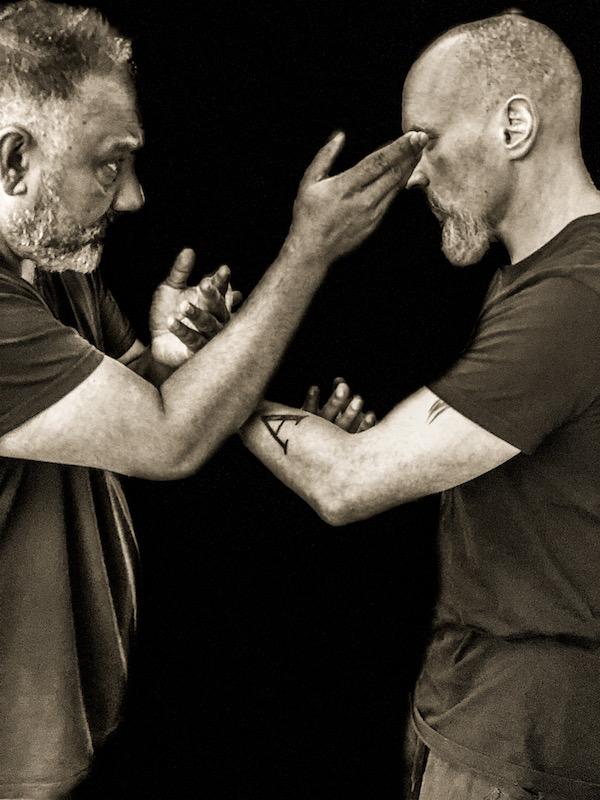



The waist continues its movement to the right as the weight [through the action of the waist] shifts slightly backwards pulling the right hand with it. Immediately, the left leg issues the extra weight [from the previous movement] forwards causing the fingers of A’s right hand to thrust into the pit of B’s throat [CV 22]
A now folds his right arm across B’s left forearm and whips his waist once more to the right, opening up B and now thrusts with the fingers of the left hand into the pit of B’s throat, as his weight shifts back to his left leg.



B borrows the energy from A’s turn to the right and bumps A’s left forearm to his left, using his own right forearm, as he shifts forwards. The roles have now reversed and B continues to do the entire drill.
A Word of Caution
The points and targets mentioned in this drill are for reference purposes only! They are extremely dangerous and at no point should any attempt be made to actually strike your partner!
Only the hinge component of the drill is permitted with reasonable power!
To develop power, each individual component of the strike can be carried out with a partner wearing strike mitts upon their hands.












